Wildfire Mitigation: The Basics of Property Protection
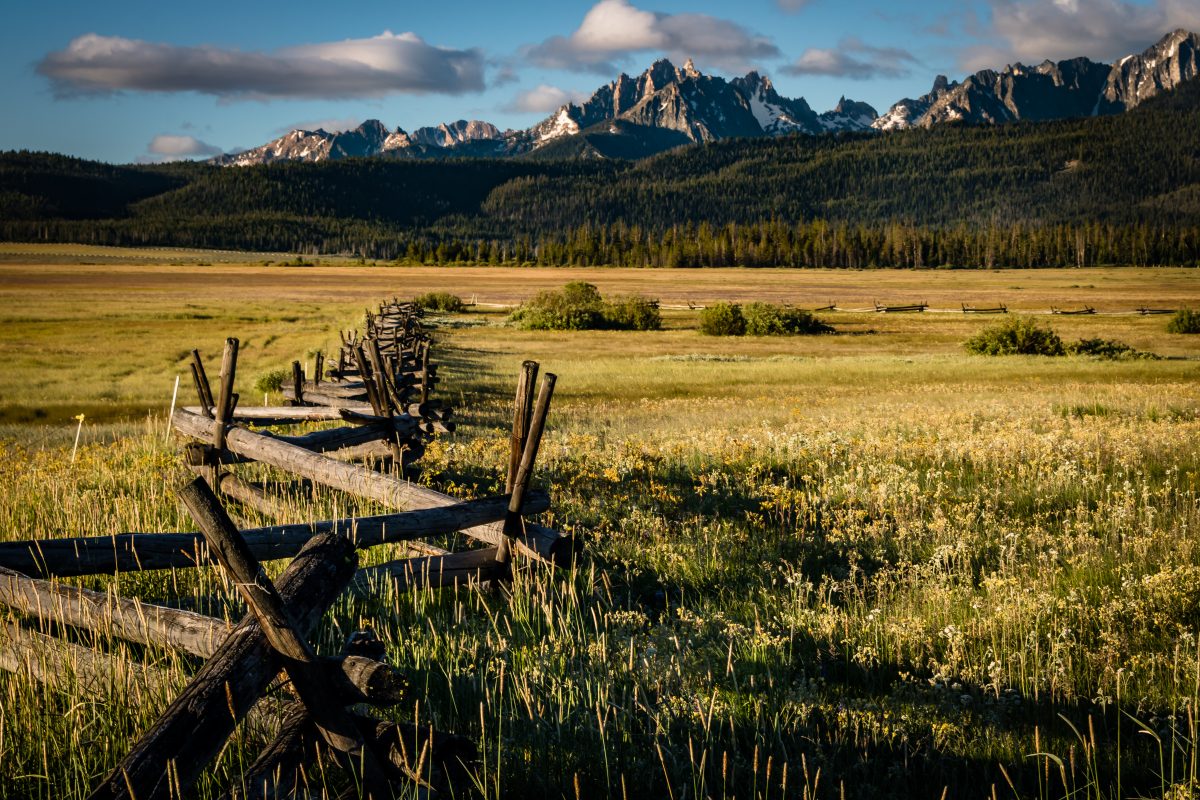
The risk of wildfire has become an unfortunate reality throughout rural North America. Risks can be reduced dramatically, though, through mitigation efforts.
Mitigation includes removing potentially flammable debris and vegetation from areas immediately surrounding structures, and thinning vegetation elsewhere on a property. Local fire departments, state extension services, county governments, and insurance companies can generally provide guidelines to assist property owners in forming a mitigation strategy.
Wildfire Protection Points Points
The Roof
A property owner should keep a roof free of debris, and have a roof professionally inspected to determine its combustibility rating.
Property Fences
Check fences, especially those close to structures, to be sure debris has not gathered along the bottom of the fence. (Imagine a hard wind pushing tumbleweeds up against a fence, creating abundant fuel for a fire.) Clear any such debris and regularly inspect fences to ensure flammable material doesn’t collect against fencelines. Consider building any new fences from noncombustible material, such as concrete, stone or metal.
Defensible Spaces
Always consult with your local fire department to correctly define defensible spaces specific to your property. In general, though, property owners should create two zones around a structure.
The first will extend at least 30 feet in every direction; inside this zone, combustible materials – including wood piles – should be removed; vegetation should be aggressively thinned; trees close to the structure might need to be removed altogether; and vehicles, trailers and the like should be removed. Close to a home, owners might consider landscaping with fire-resistant plants; extension services, landscapers or nurseries can offer insight on plant species ideal for a given climate and environment.
A second zone might extend past that 30-foot mark to a distance of 100 feet from the structure. Dead vegetation, including tree branches, should be removed from this zone, and trees inside the area should be kept trimmed and maintained.
Mitigation experts recommend removing tree branches that are six feet or less from the ground, and ensuring there’s abundant space between trees. Specific guidelines may depend on the types of trees (and bushes) on the property, and the property’s topography. Again, consult local fire authorities for guidance.
Mitigation is labor-intensive, but makes immediate sense as an investment of time and money. Efforts can be handed off to professionals who specialize in such work.
Property buyers might assume that, if a property currently has a homeowner’s policy, further mitigation efforts shouldn’t be necessary to maintain coverage. In reality, a new owner might have to follow updated mitigation guidelines (rules the former owner might not have been required to follow) in order to obtain insurance coverage. In extreme cases, a property might not be insurable at all for a new owner without aggressive mitigation work. When it comes to any rural property, particularly one that’s wooded or that has abundant grass, a buyer should make a conversation with an insurance company a key part of early due-diligence efforts.
Land Surveys to Document Your Property’s Characteristics
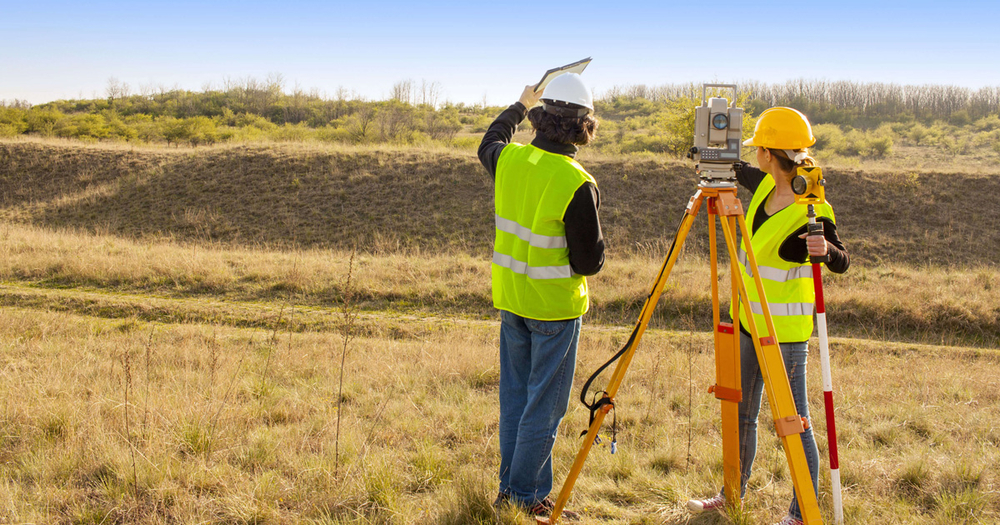
When to Consider a Land Survey?
A land purchase often requires a survey of the parcel being bought, assuming a current survey doesn’t already exist. A survey – which is essentially a map of the property, illustrating boundaries and other features – can help a lender document the nature of the property on which its providing funding, and can provide a title company assurance as to what it’s protecting. For a buyer, of course, a survey can offer peace of mind, confirmation as to what exactly is being bought.
Who is Responsible for Hiring a Surveyor?
The responsibility for hiring a surveyor can fall on either the buyer or seller, depending on the language in the purchase contract. Regardless of who must hire the surveyor, arrangements should be made soon after the purchase contract is in place, as surveyors are often booked weeks in advance; in busy markets, procrastinating on hiring a surveyor can be problematic, potentially requiring amendments to the contract calendar.
What Does a Land Survey Report Look Like?
Using existing documents, as well as data and measurements collected on site, a surveyor will produce a document – the survey – that accurately depicts the property’s size and shape, with corners and boundary lines marked, as well as the precise locations of other features, such as roads and buildings.
It’s important to note that mapping programs, including online platforms offered by many county assessors’ offices, provide parcel maps, but these aren’t surveys, might not be as accurate, and won’t meet lenders’ or title companies’ survey requirements. Assessors’ offices might have on file surveys produced when large tracts of ground were subdivided; it’s worth a buyer’s time to acquire and study these surveys, but they’ll often be too out of date to meet the survey requirements for a purchase, even if the property’s characteristics haven’t changed.
What Happens Once the Survey Report is Generated?
In lieu of a survey, an improvement location certificate, or ILC, might suffice, depending on the terms of a purchase contract and the needs of the title company and lender. Like a survey, an ILC is prepared by a surveyor, but shows only the position of improvements – buildings, roads – in relation to property boundaries, and generally serves to provide assurance that such features aren’t encroaching on neighboring properties. As it’s simpler than a survey, an ILC is also generally much less expensive; while a survey on 35 acres might cost $1,500, an ILC might run only $500. (Actual pricing on surveys and ILCs will, of course, vary by market and will be affected by the complexity of a given property.)
Even after meeting the needs of a lender or title company, a survey has obvious ongoing value, serving as a valuable reference when it comes to selecting future building sites, documenting little-used easements that might otherwise fade from memory, and equipping a property owner to handle any potential disagreements as to property lines. And, should an owner opt to put the property back on the market, that existing survey might meet lender and title company requirements for that next purchase. A surveyor can often update and re-certify an existing survey, provided the survey doesn’t become outdated.
Reclaimed Barn Wood: Bring a Rustic Feel into Your Home
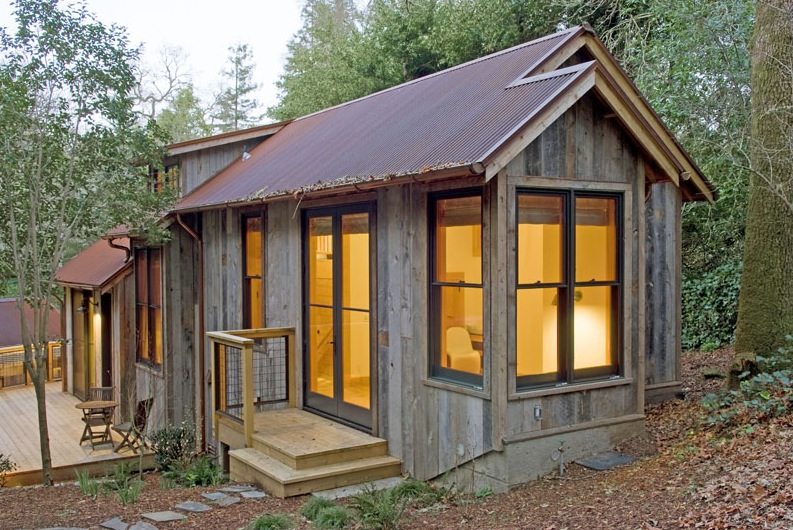
This Coveted Naturally-aged Material Can Tastefully Bring a Rustic, Rural and Warm Feel to Your Home’s Interior Design
Take a drive through virtually any part of the American West’s farm and ranch country, and you’ll encounter aging farmsteads with weathered barns built in the 19th and early 20th centuries. Often, these barns are no longer as useful as they once were, but their chief material – weathered wood, rich in frontier character – is finding new life in contemporary interior designs meant to evoke a rural spirit. Captivated by its history and rustic appearance, homeowners are sourcing old barn wood for interior walls and doors, and for decorative elements that give off a “homestead” vibe. These traits, paired with the environmentally friendly notion of re-using existing materials, have made reclaimed barn wood a hot commodity.
Suitable barn wood is a limited resource, and high demand has erased many of those old farmsteads from the landscape, but the material can still be sourced directly from farmers and ranchers. In best-case scenarios, those landowners might welcome an offer to clear aging, perhaps non-functional, structures from their properties, but it’s a safe bet that they’ll expect to be paid for a product they know is in high demand. Salvaged wood from a sizable barn might easily be worth thousands.
Some Points to Consider When Looking for Reclaimed Wood
It can be difficult to confirm the species of old barn wood
A barn’s original builders generally used materials that were easily accessed. Rare, old-growth timber will be worth more than pine or spruce. Species confirmation might require consulting a timber expert.
Some barn wood might not be worth reclaiming
Not every board salvaged from an old barn will find its way into an interior-design strategy. Some boards will be rotten, or have insect damage.
Barn wood may come with no shortage of metal (old nails & screws)
In addition to posing a safety hazard during the salvage process, those nails and screws will need to be removed before the wood can be prepped for its second life inside a home.
Once sourced, it should be transported in dry conditions
Boards should be given the once-over with a stiff brush (again, watch for nails), then cleaned; some experts recommend spraying off loose grime and dirt, then scrubbing with a mixture of 1/2 cup dishwashing detergent in 5 gallons of water; a toothbrush might come in handy for getting dirt from the deep grain of old wood. Once boards have been rinsed, they can be leaned against a wall or fence to dry, but shouldn’t stay exposed for more than two to six hours, as longer exposure time can lead to warping and bowing. Cleaned boards should be stored inside, in a dry environment.
The Increased Demand for Reclaimed Barn Wood
High demand has created a category of retailers who deal in reclaimed barn wood, so consumers lacking the time or energy to explore the countryside in search of aging farm buildings, and then transport and clean their acquisitions, can simply seek out dealers in their area. Such retailers range from no-frills warehouse operations dealing in stacks of lumber, to more artisanal offerings, with more selective, higher-end inventories. One caveat: wood available from such retailers isn’t always what it’s represented to be; buyers can prep themselves by researching the traits of reclaimed wood.
Adding Authenticity to Your Country Home
Homeowners hiring professionals to work with reclaimed wood should lean toward contractors with experience working with such material. Some reclaimed-wood suppliers can recommend specialist contractors, many of whom fall into the “artisan” category, and might have portfolios of previous work to share with potential clients.
Reclaimed barn wood offers a unique opportunity for a homeowner in any setting – rural, suburban, city – to create an interior that’s not only inspired by farm country, but also constructed from physical materials and textures directly associated with such an environment. The result can be a one-of-a-kind home design with a story to tell.
The Tack Room: Get Outfitted For an Equestrian Lifestyle
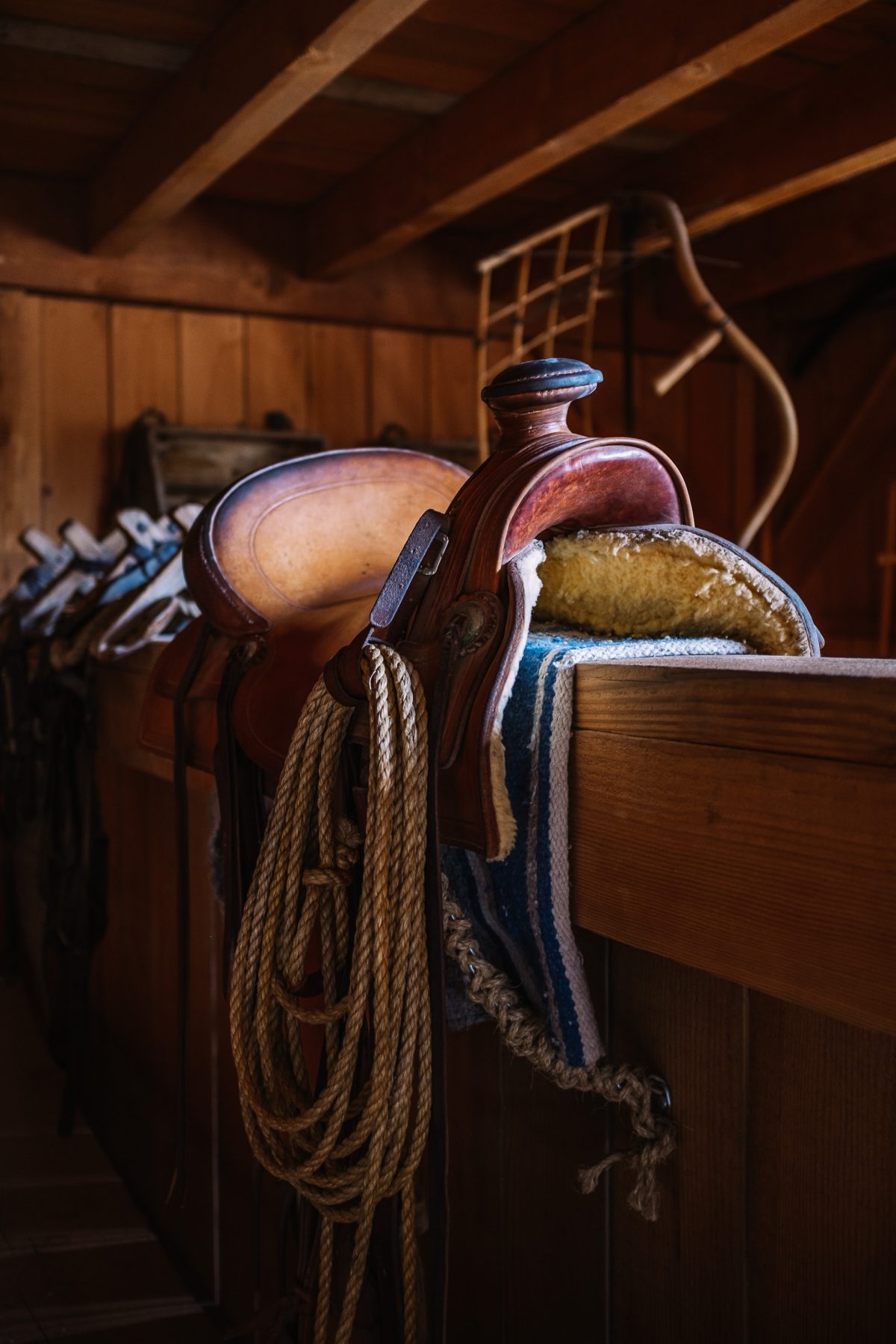
Establishing the Perfect Tack Room
For many land buyers, investments in rural properties represent the fulfillment of longtime ambitions to adopt rural, ranch-based lifestyles. That often includes the purchase of horse. For first-time horse owners – or those returning to an equestrian lifestyle after a long absence – getting fully equipped for day-to-day horse ownership can be overwhelming, even confusing.
For those new horse owners, here are some guidelines for setting up a tack room and ensuring it includes the essentials.
Tack Room Essentials
Designate a specific area in the barn for use as a tack room
Don’t settle for an open area at the end of a barn breezeway; a tack room should have four walls, a ceiling, a locking door and – ideally – a cement floor that can be easily swept.
Barns attract mice and other rodents
In constructing the tack room, strive to close all gaps in the walls. If you’ll store feed in the tack room, use containers that seal tightly.
Install saddle racks
Freestanding or wall-mounted saddle racks allow riders to easily stow saddles off the floor, and help keep the tack room orderly.
Install bridle racks
Nothing contributes to tack-room disorder quite like a tangled mess of bridles and reins. Bridle racks help keep headgear organized, and help bridles maintain their proper shapes.
Set aside room for tack trunks, and install shelving
Smart, versatile storage options make a tack room useful and keep it from becoming a cluttered space. Make an effort to plan your tack room with the future in mind; in the years to come, you might deal with more horses, and therefore more gear, or you might share that tack room with other riders.
Secure your tack room
Saddles and bits are prime targets for thieves who understand the dollar value of such items; even a modest collection of saddles, bits and spurs can easily be valued in five-figure territory. Lock and control access to your tack room. Some horsemen go so far as to install video-security systems in their barns, in part to help monitor the tack room.
Tack: Stable & Riding Gear for Your Horses
Invest in a good saddle, whether custom or mass-produced
A custom saddle will be of higher-quality than factory-made options, and can be an heirloom item that could potentially gain value. Custom saddles aren’t cheap, though; expect to pay several thousand dollars for a fairly basic saddle from a known maker. And, the best saddlemakers have waiting lists that can represent years of back orders. For most riders, a high-end, factory-made option will suffice. Always buy saddles from makers or from retailers who specialize in saddles (don’t buy a saddle at a feed store); or look at a secondhand purchase from an experienced horseman you trust.
Only buy the saddles you need
Some riders operate on the theory that they need a wide collection of saddles to accommodate different horses. In reality, a well-made saddle should fit the vast majority of horses.
Invest in saddle pads
Building on the theme above, fine-tuning a saddle’s fit for a particular horse is often a matter of experimenting with different saddle pads. Building a collection of several saddle-pad options will help ensure that a single saddle can be used on a wide variety of mounts.
Don’t forget the back cinch and breast collar
For the sake of simplicity, many riders will opt to use only a single, front cinch. A back cinch and breast collar will provide additional stability, keeping a saddle in place in a variety of riding conditions. This isn’t just a matter of comfort or convenience, but is also a safety issue.
When it comes to bridles, be realistic
For all-around, general riding, it’s tough to beat a good snaffle bit. There’s a certain prestige associated with spade bits – they represent an advanced level of horsemanship and the refinement of a bridle horse – but the reality is that very (very) few horses ever reach a level of training that would make a spade bit appropriate. Likewise, few riders understand how to safely use a spade bit. A snaffle, on the other hand, is a safe and simple option that’s appropriate for virtually all horses, from colts to seasoned cow horses.
Learn to use spurs properly
Spurs are intended to offer a horse a clearer set of signals; they’re meant to be used gently, with the slight turn of a rider’s ankle touching a rowel to the horse’s side. Riders unaccustomed to spurs, or unfamiliar with their correct use, simply shouldn’t bother with them.
Round out your tack collection with the essentials
This should include a variety of halters and lead ropes; hoof picks; and brushes, curry combs and other grooming supplies.
Fads & Gimmicks in the Horse World
Be skeptical of unfamiliar equipment and look to trusted horsemen for guidance on the tack that might or might not be the right fit for you and your horse. In general, it’s best to stick to simple, straightforward tools.
Drilling a Well: Developing a New Water Source On-Property

Developing a water source for your property shouldn’t be a daunting experience.
Once a buyer has purchased a parcel of land, one of the most likely first steps in developing the property is drilling a well. For the first-time landowner, the prospect can be daunting, but it needn’t be. Wells are simply part of rural life and, while not inexpensive, they provide both reliable water sources and a sense of self-sufficiency for property owners.
What to Expect When Drilling a Well?
So, what can a new property owner expect when it comes to drilling a well? Public records (likely available through a state’s water division) offer a good source of usable intel. By examining well permits and pump tests for neighboring properties, one can gather data on common well depths and pump rates in the area. It’s important to remember that each property’s drilling conditions can be unique; a neighbors’ experiences might not reflect the reality encountered on a particular parcel.
Planning a Well Location on Your Property
A landowner will need to investigate the well-permit application process. A state will generally offer different permit types, which regulate how water can be used. In Colorado, for example, a “domestic” permit typically limits usage to household use, the watering of livestock, and the irrigation of up to one acre; “household” permits are available for in-home use; higher-volume uses require irrigation or commercial permits.
A drilling contractor will consult with a landowner on potential well locations, taking into account the contours of the land and the parcel’s geology. A well driller will work to avoid geologic barriers, like bedrock, and low spots in which surface water could pool, potentially contaminating a well. A well should be located away from other potential contamination sources, such as septic fields or ag ground on which pesticides and fertilizers will be applied.
The contractor will drill the well. If all goes according to plan – and the process generally does go according to plan – the driller will hit a productive aquifer, then line the hole with steel casing. A well pump will be installed, most likely in the well itself. A pump test can then be performed, providing data on water quality, pumping rate, and well performance. It’s a good idea for a property owner to have a well test performed regularly (some suggest on an annual basis) to monitor both a well’s functionality and the nature of the water being output.
As for the cost of drilling a well, this will depend on geography, geology (the degree of difficulty in hitting water, the depth a contractor will need to drill), and the regional market. A very general guideline often cited is $15 to $30 per foot. A contractor, though, might charge a set fee that covers fixed costs and drilling to predetermined depth at which water is commonly hit, then charge per foot after that point, if further drilling is necessary to reach an aquifer. A well pump, a pressure tank, and remaining water-supply infrastructure are additional expenses.
Well Maintenance & Water Source Management
Once a well is in place, protecting that water source, particularly from potential contaminants, should be among a landowner’s chief priorities. A well pump won’t last forever, but quality equipment can typically be expected to last 10 to 15 years before requiring replacement; in the event the well pump shuts down, have a contractor’s number handy. Some landowners install cistern systems as backup measures; water contractors can generally outline such options and their costs.
Hay Income for the Absentee Owner: Earn Labor-free Revenue
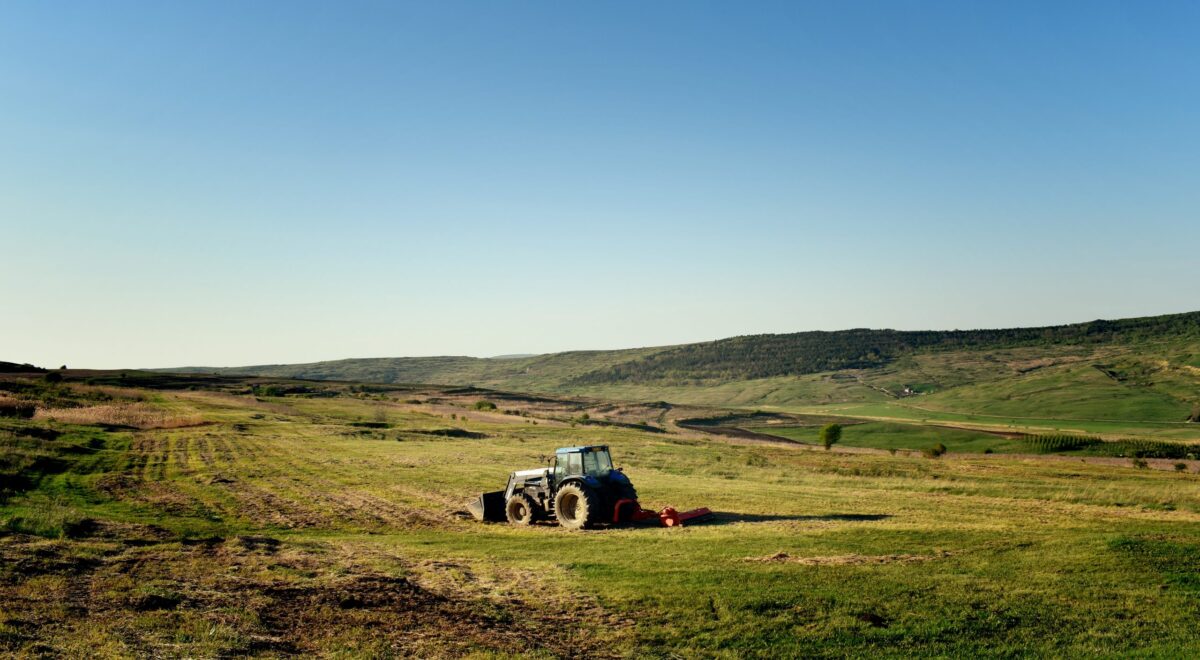
Earn Labor-free Revenue From Your Unused Hay Ground.
Investing in hay-producing ground, or land with the potential to produce hay, offers a property owner a unique opportunity to create a revenue stream, even if that landowner lacks the equipment or know-how required to put up a hay crop.
Benefits of Working with Custom-haying Businesses to Utilize the Land
Custom-haying businesses work with landowners in harvesting hay crops. Services can range from a la carte to comprehensive. Perhaps a landowner can handle cutting and hauling hay, but needs to outsource baling. Or, an absentee owner might want a contractor to take on everything from seeding, fertilizing and irrigation, to cutting, baling, hauling, storing and marketing.

How Haying Providers Operate
Haying contractors charge* for those a la carte services, of course, but in cases where the haying operation takes on full management of hay harvesting, something akin to a sharecropper arrangement can be struck, with the contractor taking part of the resulting crop as payment, with no cash outlay from the landowner. The contractor then earns actual revenue from selling his share of the hay crop.
This leaves the landowner with a portion of the crop to sell; or, the contractor can assume the responsibility of marketing the entire crop and splitting the revenue with the landowner. In that latter scenario, the property owner has earned a paycheck with no investment in time, labor or equipment. Money simply lands in the bank.
As an added benefit, that landowner’s property should be in outstanding condition, given the intensive management required by farming. Falling short on weed elimination, or maintenance of irrigation lines, fences and roads, will threaten a haying contractor’s ability to earn a living, so such tasks will be among a professional’s priorities.
As with any business arrangement, the expectation of each participant (the landowner and the custom harvester) should be spelled out in advance, in a written agreement. It’s in the interest of both parties to a harvesting agreement to have a productive, friendly, long-term arrangement that assures a harvester access to productive ground and a landowner a steady income stream.
Custom-haying Rates
Of course rates can vary by region and market, but consistencies can be seen throughout the Rockies, Plains and Midwest.
Recent surveys of custom harvesters show that, in Colorado, mowing rates range from $10 to $20 per acre, while baling rates range from 50 cents to $1.50 per bale for small, square bales, and $8 to $12 per bale for large, round bales.
For comparison, recent figures in Kansas reflect mowing rates of $13.50 to $15 per acre, and baling rates around $1 per bale for small squares and $12 to $14 for large, round bales.
Further east, rates in Iowa range from $8 to $15 per acre for mowing; 40 cents to $1 per bale for small squares; and $8 to $15 per bale for large, round bales. Additional data on current custom-harvesting rates can generally be obtained from state extension services, which routinely survey service providers.











